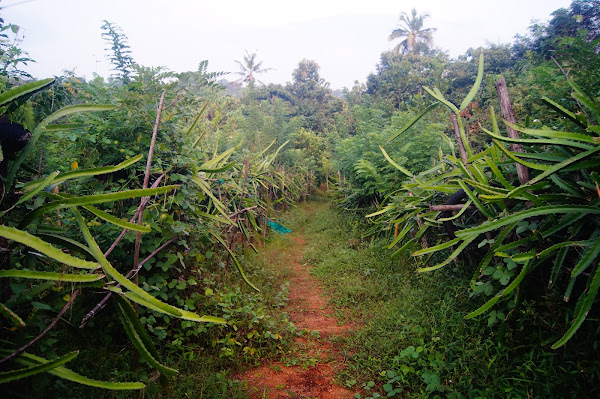Lantana ! We call her Sundari!!
Sundari Plant aka Lantana ; our living Kaleidoscope at Liz Pepper Gardens, Forest Farm
In our forest Farm, the sundari plant emerges as a botanical symphony, it effortlessly blends into the ecosystem with its variety of patterns and colors. Beyond its ornamental charm, the sundari plays a pivotal role in pollination, contributing to the farm's ecological vibrancy, while also capturing the market's attention with its diverse seed varieties and colors, creating a harmonious blend of nature and commerce.
Though known as Lantana Camara , we call her sundari and she astonishes with her kaleidoscopic array of patterns and colors.
The sundari's beauty is more than skin deep; it actively participates in the ecological ballet of pollination. Beyond its ecological contributions, the sundari plant has established itself as an economic cornerstone in the regions of Kerala, including Kollam and Trivandrum.
The seeds, each embodying the unique genetic heritage of the sundari, are sought after for their versatility and utility, contributing significantly to the local economy.
While celebrated for its beauty, Lantana has also faced challenges in regions where it has become invasive. Its rapid growth and ability to form dense thickets have led to concerns about its impact on native plant species. Efforts to manage Lantana involve a balance between appreciating its ornamental value and implementing strategies to control its spread in sensitive ecosystems.
However, The sundari's genetic diversity is a fascinating aspect of its existence. Various varieties, including the yellow-pink and red-yellow sundari plants, showcase the interplay of genes within the species. The farm's commitment to sustainable practices includes preserving and encouraging this genetic diversity, allowing for natural hybridization that ensures the continued resilience of the sundari plant in the face of environmental changes.
Lantana, graces landscapes with its vibrant hues, earning its place as a symbol of natural beauty and resilience. Its native origin is in the tropical regions of the Americas, and has traveled across the globe, enchanting gardens and wild spaces alike.
A member of the Verbenaceae family, it’s renowned for its stunning clusters of small, tubular flowers that collectively form a mesmerizing display of colors. The inflorescence comprises multiple tiny blooms. The color variations within a single cluster are a testament to the plant's genetic diversity, with shades ranging from radiant reds, oranges, and pinks to serene yellows and purples. And we love the red-red ones at our forest-farm !!!!
Their nectar-rich flowers attract a variety of pollinators, including butterflies and bees, contributing to the overall biodiversity of the ecosystem. The plant's adaptability to different climates and soil types allows it to thrive in a range of environments, making it a resilient and integral part of natural landscapes. They feed us honey and though they are a little clumsy growing and need our mentorship, we have all the time for Sundari at Liz Pepper Gardens!!!
Also read







Comments
Post a Comment